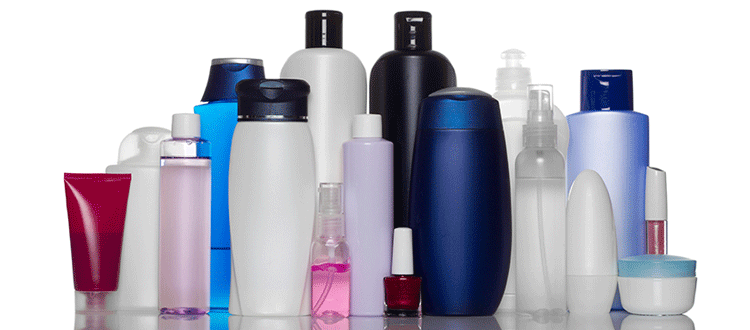All Regarding Chemical Products: Crucial Details for Safe Usage and Handling
When working with chemical products, knowing their buildings and potential dangers is essential for your safety and security. You need to comprehend how to manage them appropriately to prevent mishaps. From acknowledging sensitivity to making sure appropriate disposal, each step issues. What regarding those times when something goes incorrect? Recognizing initial help procedures can be just as essential. Let's discover the crucial techniques that can maintain you and your setting secure.
Comprehending Chemical Characteristics
Recognizing chemical buildings is necessary for any individual functioning with or around unsafe products. Recognizing whether a chemical reacts with water or air can assist you in storage and dealing with techniques.
Furthermore, comprehending the physical homes, like steaming and thawing factors, informs you regarding the problems in which a material can transform state. Constantly refer to Security Information Sheets (SDS) for detailed details on details chemicals.
Safe Handling Practices
When dealing with chemicals, it is crucial to adhere to risk-free handling techniques to lessen threats and assure your safety and security. Constantly use ideal individual safety devices (PPE), including gloves, goggles, and lab layers. Acquaint yourself with the Material Security Data Sheets (MSDS) for each chemical, as they offer substantial info concerning dangers and emergency treatment actions.

Maintain your work area organized and devoid of clutter to lower the opportunity of mishaps. If a spill takes place, follow your center's emergency situation procedures promptly. Constantly clean your hands completely after managing chemicals, even if you used handwear covers. By adhering to these techniques, you'll create a safer atmosphere for on your own and those around you.
Appropriate Storage Methods
To ensure the security and stability of chemical products, it's necessary to store them appropriately. Beginning by keeping chemicals in their original containers with tags intact.
You need to likewise separate inappropriate chemicals, such as acids and bases, to avoid dangerous responses. chemical products kingwood texas. Ensure shelves are durable and safeguarded to stop tipping. Additionally, use additional containment, like trays, to catch any type of leaks or spills
Frequently examine for expiration dates and indicators of degradation, and if you observe any problems, do something about it instantly. Verify that your storage location is well-ventilated and available just to licensed personnel. Complying with these guidelines assists create a much safer atmosphere for you and others that might come right into call with these items.
Disposal Guidelines
Proper disposal of chemical items is important for both safety and security and environmental management. First, inspect regional laws for details disposal guidelines, as they can vary widely. Never put chemicals down the tubes or throw them in regular trash unless clearly allowed. Rather, seek marked collection websites or contaminated materials programs in your location.
If you're managing smaller sized amounts, think about making use of up the product as designated or contributing it to somebody who can utilize it. Always safely seal containers to avoid leakages and label them plainly.
When moving chemicals for disposal, maintain them upright and prevent blending different compounds, as this can produce hazardous responses. It's likewise smart to maintain the initial labels intact for recognition. By complying with these disposal standards, you'll add to a more secure environment and lower the risk of unintentional exposure or contamination.
Recognizing Possible Hazards
When functioning with chemical items, recognizing possible hazards is essential for your security. Start by determining chemical tags and recognizing security information sheets, as they supply necessary info. Familiarizing on your own with usual risk icons can also assist you remain sharp to any threats involved.
Determining Chemical Labels
Determining chemical tags is essential for ensuring security in environments where dangerous materials are existing. These tags provide essential details regarding the materials, consisting of potential hazards and required safety measures. When you come across a chemical, seek icons showing its danger degree. As an example, a head and crossbones signals poisoning, while a fire sign denotes flammability. Pay interest to the color-coded risk groups. In addition, look for any warnings or safety instructions that come with the label, as these guide appropriate handling and storage space. Always keep in mind, taking a minute to check out and comprehend these labels can avoid accidents and guarantee a more secure working atmosphere. Stay notified, and prioritize your safety and security and that of others around you.
Comprehending Safety And Security Information Sheets
Safety Data Sheets (SDS) are crucial documents that give thorough info concerning chemical products, including their prospective hazards. When you take care of chemicals, it's vital to read the SDS to understand the risks involved. By doing so, you're taking vital actions towards guaranteeing your safety and the security of those around you.
Usual Danger Icons
Understanding the info on Safety Information Sheets (SDS) assists you recognize numerous risk icons that indicate possible risks related to chemical items. These icons act as fast aesthetic cues, signaling you to dangers like toxicity, flammability, or corrosiveness. A skull and crossbones indicates a toxic substance, while a flame symbol cautions of combustible products.
When you see a symbol, take it seriously. Constantly review labels and adhere to safety preventative measures. Bear in mind, it's important to save chemicals correctly and make use of personal protective tools (PPE) when necessary. By understanding these usual hazard signs, you can substantially decrease the danger of crashes and guarantee a much safer working setting on your own and others. Stay notified and remain safe!
Help Measures for Chemical Exposure
When you encounter a chemical exposure, knowing the check it out right first help steps can make all the difference in decreasing harm. If a chemical sprinkles right into your eyes, wash them quickly with clean water for at least 15 minutes.

For breathing, transfer to fresh air as soon as possible. If you're having difficulty breathing, seek medical interest quickly. If someone ingests a chemical, do not generate throwing up unless instructed by a toxin control facility or a doctor.
Always have security information sheets (SDS) handy to provide details concerning the details chemical involved. Remember to call emergency services if the exposure is serious or if symptoms continue. Your fast activities can substantially reduce the risk of serious injury.
Resources for Chemical Security Understanding
To successfully browse the world of chemical security, it is vital to use a selection of resources that can improve your recognition and readiness. chemical products kingwood texas. Beginning by visiting websites like the Occupational Safety and Health Management (OSHA) or the National Institute for Occupational Safety And Security and Health (NIOSH), which supply guidelines and safety information sheets
Additionally, take into consideration taking on the internet courses or webinars concentrated on chemical safety and security and handling procedures. Neighborhood area universities frequently offer workshops, too.
Do not forget the relevance of signing up with appropriate professional companies or online forums where you can link with others site web in the area.
See to it to maintain a well-stocked library of safety and security handbooks and emergency situation action overviews.
Finally, constantly stay upgraded on policies and finest practices by signing up for industry e-newsletters or complying with safety blog sites. These resources will empower you to manage chemicals safely and sensibly.
Often Asked Questions
What Individual Protective Devices Should I Use When Taking Care Of Chemicals?
When dealing with chemicals, you must use safety goggles, gloves, and a lab coat. Depending on the chemical, think about utilizing a respirator or face guard. Constantly prioritize your security and assurance appropriate air flow in your office.

Exactly How Can I Recognize an Unidentified Chemical Item?
You can identify an unknown chemical product by inspecting tags, checking out physical residential properties, and speaking with safety information sheets. If not sure, prevent direct contact and seek specialist help for proper recognition and handling treatments.
Exist Age Restrictions for Buying Certain Chemicals?
Yes, there are age constraints for buying specific chemicals. You'll usually discover that items like sites solvents or pesticides require you to be at the very least 18 or 21, depending on neighborhood regulations. Always examine before purchasing.
Can Chemicals Be Mixed for Easier Disposal?
Blending chemicals for easier disposal isn't secure. It can produce dangerous responses or release unsafe materials (chemical products kingwood texas). Constantly check guidelines and speak with specialists to ensure you're taking care of chemicals appropriately and safely. Your security matters!
What Should I Do in Case of a Chemical Spill in the house?
In case of a chemical spill in your home, stay tranquility. Leave the location, prevent inhaling fumes, and call for assistance. Don't attempt to clean it up unless you're trained and geared up for the particular substance.
Verdict
To conclude, being knowledgeable concerning chemical products is necessary to guaranteeing your safety and the safety of those around you. By understanding chemical homes, exercising secure handling, and complying with correct storage space and disposal guidelines, you can lessen threats. Constantly stay alert for potential hazards and know the first help actions for chemical direct exposure. Keep in mind, continuous education and understanding are essential in advertising accountable chemical management. Remain notified, remain secure, and make safety a leading priority in your setting.